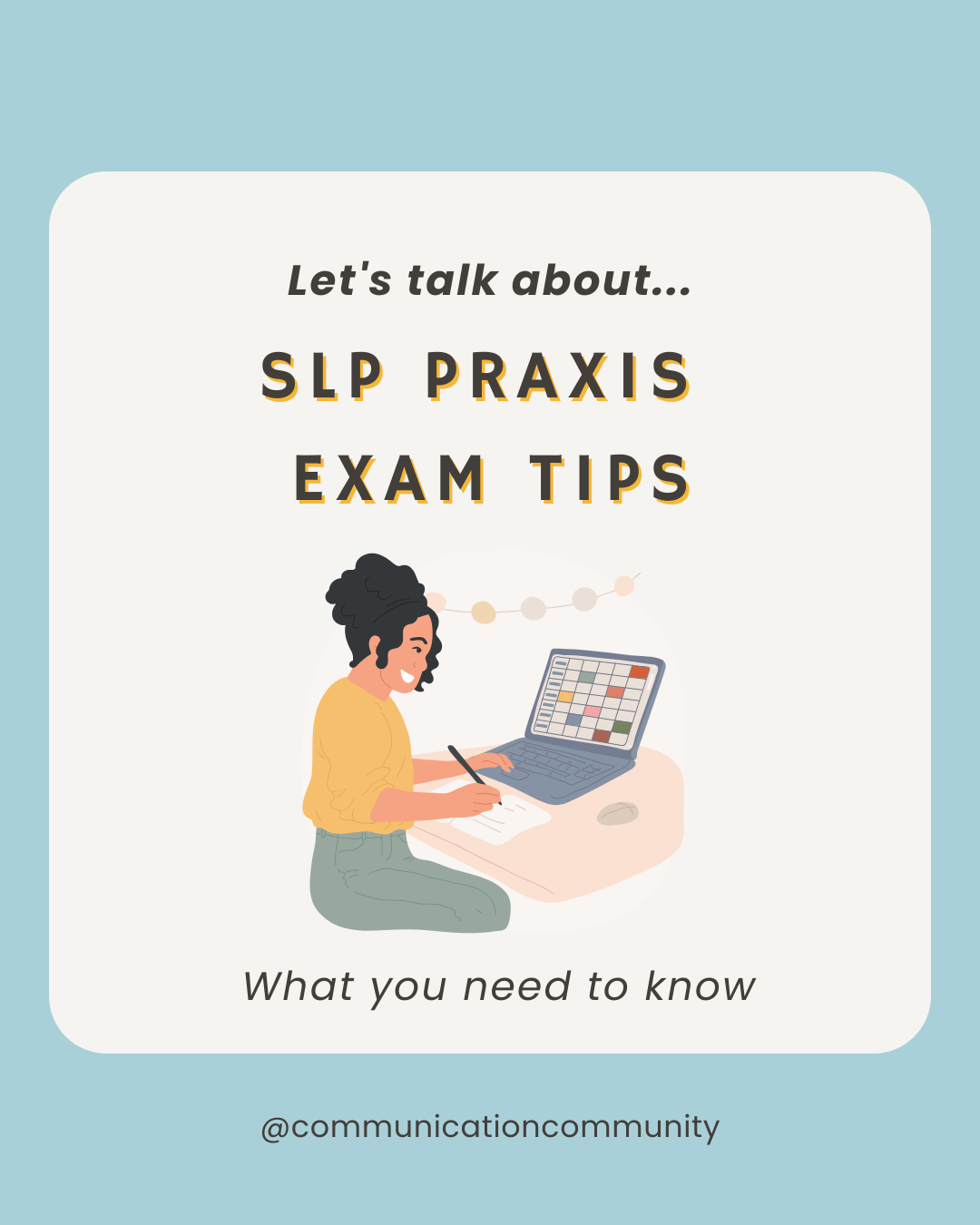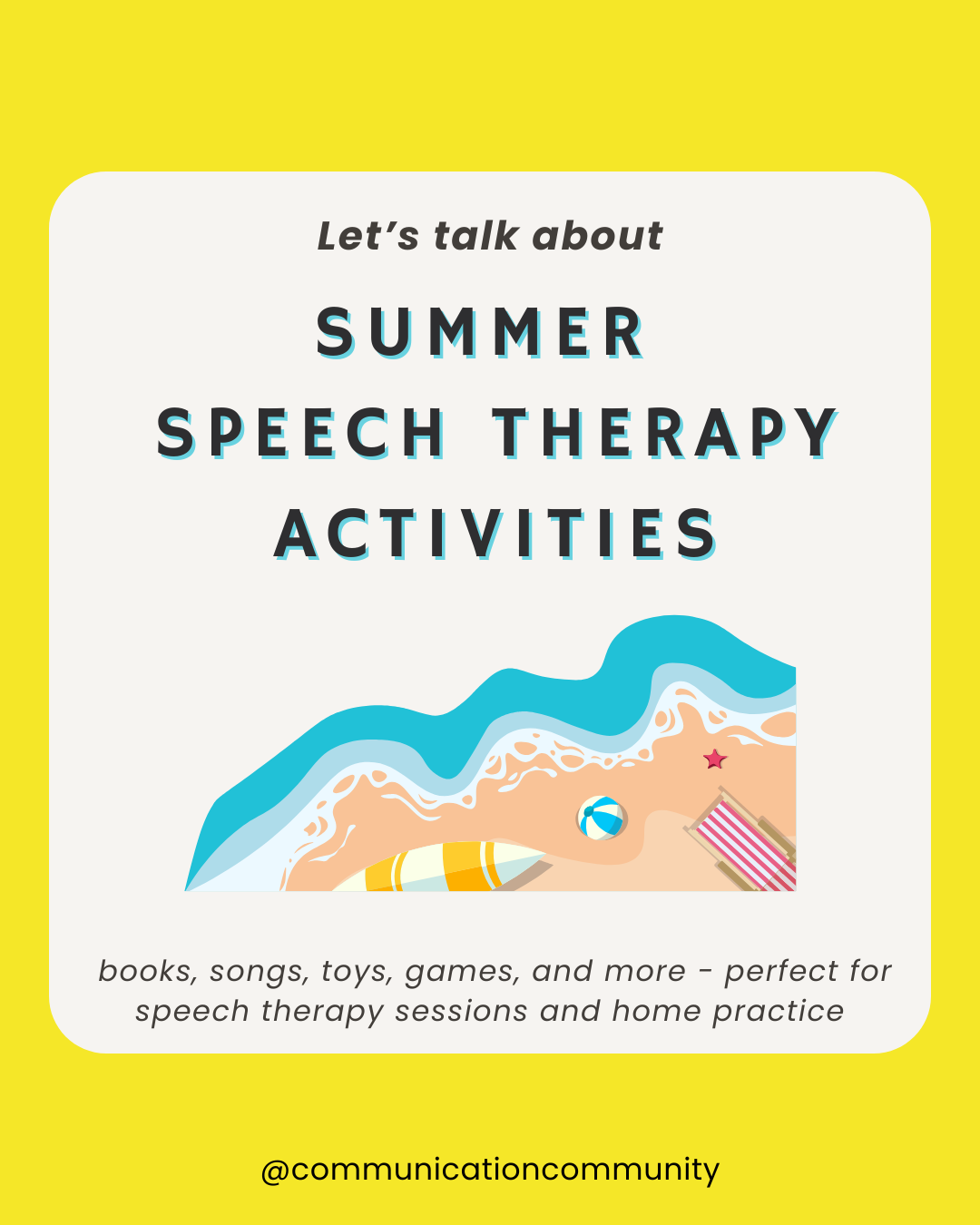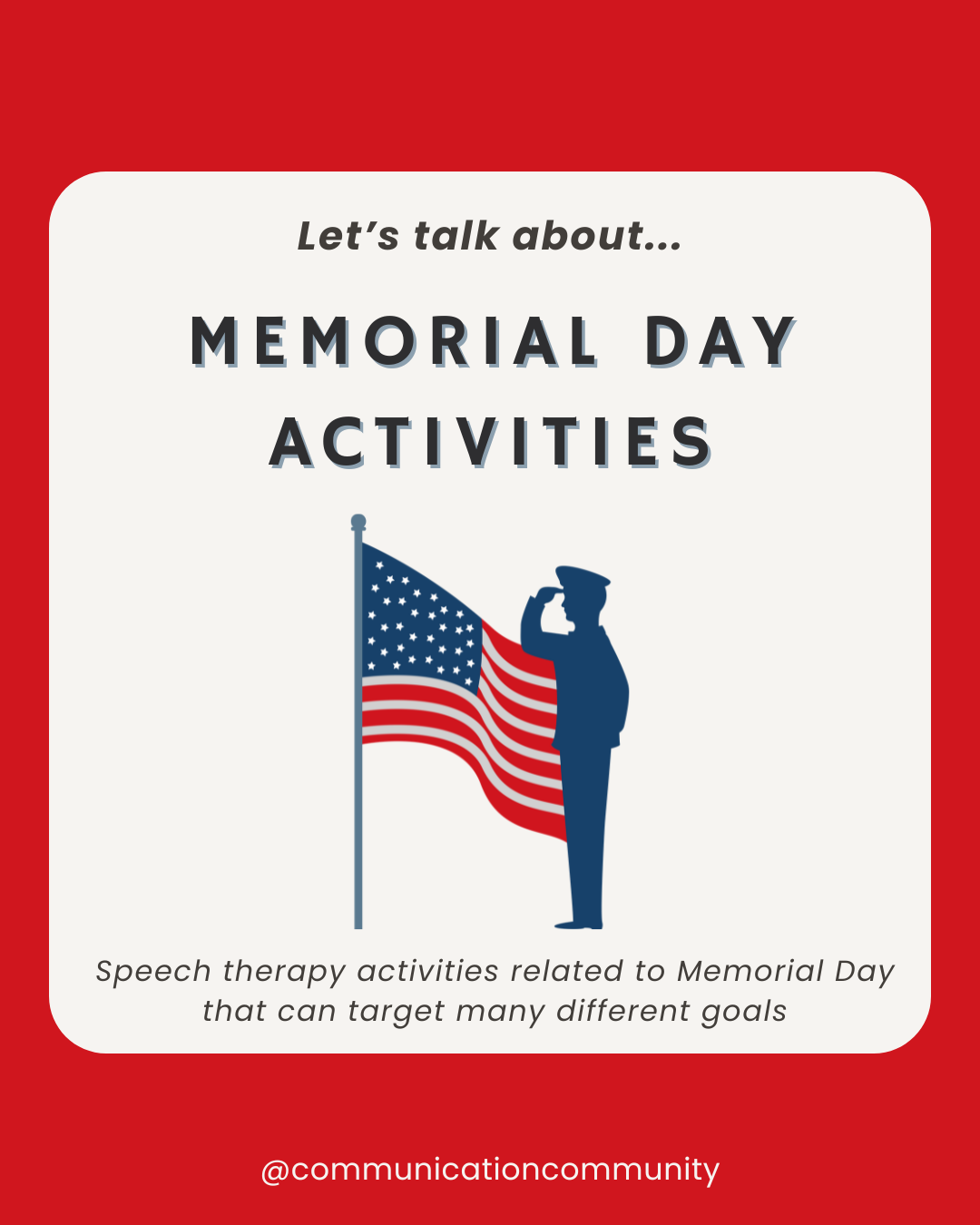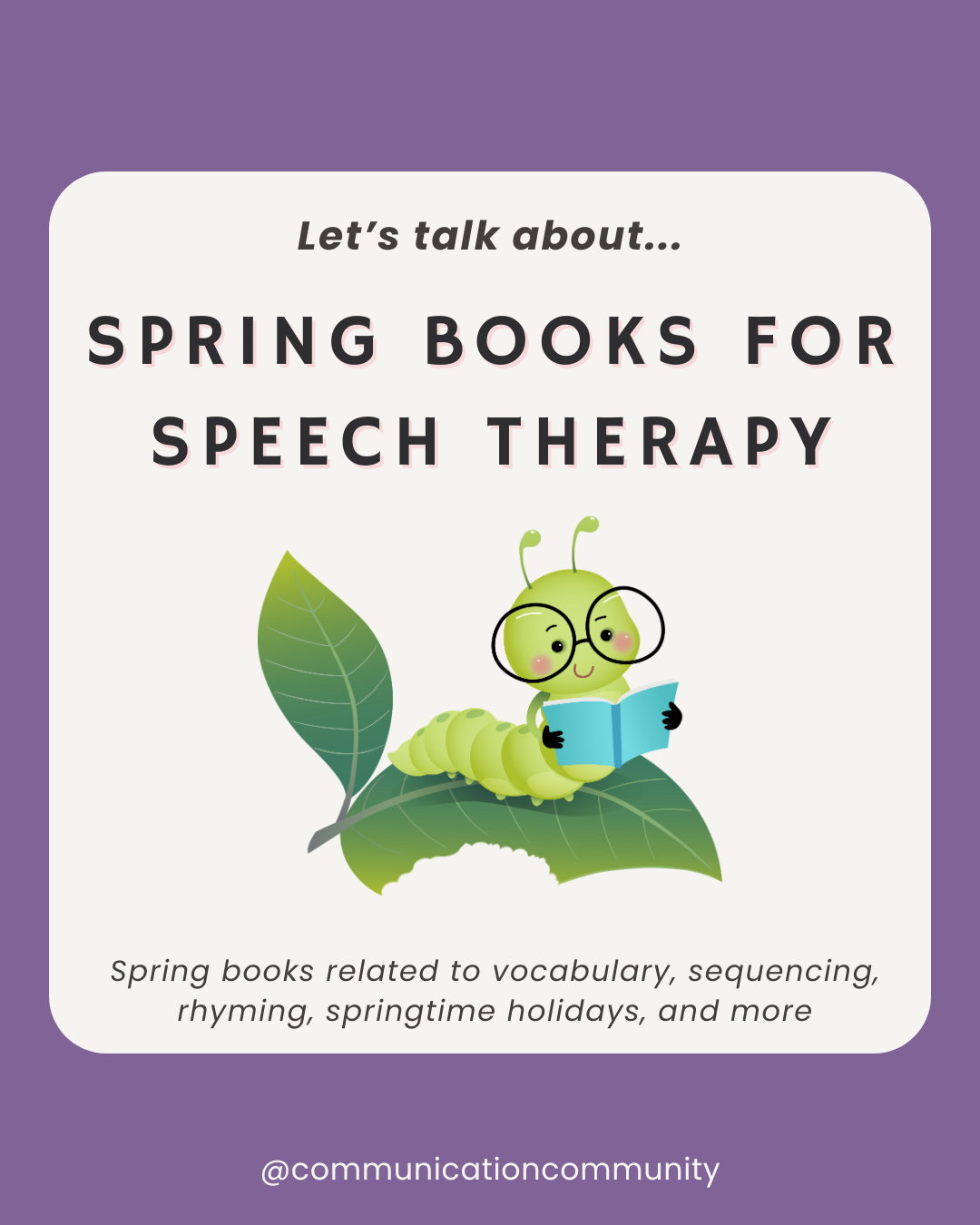What is Expressive Language?
Expressive language is the language that individuals use to communicate. Generally, this is thought of as speaking and writing but it may also include other forms of communication. For example, individuals who use augmentative and alternative communication (AAC) may demonstrate expressive language through the use of gestures, communication boards, and/or speech-generating devices. Some individuals use multimodal communication, which includes the use of both AAC and verbal language.
This differs from receptive language, which is the language that we understand. Developing expressive language skills is an important milestone for all individuals. Think about how exciting it is for caregivers or therapists when little ones speak their first words!
How to Target Expressive Language Skills
When targeting expressive language skills, it can be really tempting to ask a lot of questions and fill any silence (we’ve been there ourselves). Individuals who are developing expressive language skills may also need extra time to process the questions they’re being asked; allowing some silence can be incredibly beneficial - therapists use this strategy ALL the time (sometimes called the expectant pause)
Asking open-ended questions is a great way to encourage expressive language as well. For example, when using play dough, you might say, “What are you making?” instead of, “Did you make a snake?” If an individual is unable to answer this open-ended question, providing options can be helpful. You could say, “Is that a snake or a paintbrush?”
Using recasts is a great way to model language. For example, if an individual sees a picture of two cats in a story, and says, “Look, cat!” you can say, “Yes, I see TWO catS!,” modeling correct grammar (morphology and syntax). Recasts can be used for individuals who use mainly shorter utterances or have many grammatical errors.
5 Great Expressive Language Activities
These are some of our favorite ways to target expressive language skills! You may also consider using these activities for carryover as well; caregivers can help develop/increase these skills outside of therapy sessions. These activities can be used for individuals to use language by speaking, writing, and/or using AAC systems.
1. Use Preferred Toys
One of the best ways to develop expressive language skills is while the individual is engaged in something they enjoy doing - this can drastically affect motivation and participation. Preferred items and activities may vary widely but finding something the individual enjoys and targeting language from there is a great starting point. Some examples include:
A variety of vocabulary (semantics) words can be introduced or reinforced when playing, including nouns, verbs, and adjectives.
Example: For a child who enjoys a pretend cash register and is working on expanding vocabulary- try using phrases like, “give me,” “here you go,” and “time to pay!”
2. Engage in Arts and Crafts
Arts and crafts activities allow ample opportunities to request materials and comment/describe what has been made. Vocabulary words (especially adjectives) can be targeted as well as pragmatic language (e.g. turn-taking).
Example: Questions you can ask include, “How does __ feel?” “Is it smooth or rough?” “Are you using small or large pieces?”
3. Tell Stories
After reading a story, have the individual(s) RETELL the story. You can use the pictures for support or see what they are able to do without any visuals. When retelling stories, you can reinforce new vocabulary or sentence structures that appeared in them.
- Wordless picture books, like A Boy, A Dog, and A Frog, are great for this!
- Story Cubes is also a great resource for telling stories and working on expressive language.
- Example: You can guide retells by saying, “First, what happened?,” and “Then, what did you see?”
4. Play Guessing Games
Guessing games encourage individuals to communicate in order to figure out the correct answer. They encourage individuals to describe things using different vocabulary and can be used to work on specific sentence/question structures or produce a variety of WH- questions.
Popular guessing games include:
- Guess Who
- Hedbanz and Hedbanz Jr.
- Example: "I think it is ___" sentence stems or "What is [person] eating?"
5. Maximize Media
Music and videos are fun and can be customized for individuals of all ages and all interests. Wordless videos are especially great resources for encouraging language development as well. Music and videos can be used to work on:
- Learning new vocabulary
- Rhyming and phonological skills
- Exploring emotions
Example: You listen to a song, pause it, and encourage them to produce the missing word. You can also ask how characters in wordless videos may be feeling and why.
These activities can be used in SO many more ways than described to target expressive language! Almost any activity can be customized to target specific skills (e.g. retelling a story in present or past tense). We love these because they have been shown to be engaging and fun for individuals - and ourselves! They also require little to no prep, something else we love.
*We may make a small commission if you purchase any materials; though all opinions are our own :)
More Expressive Language Activities and Resources
Check out some of our related posts:
- 5 Simple (but effective) Receptive Language Activities
- What is Expressive Language?
- How to Write Expressive Language Goals
- Language milestones birth to 5 years
Expressive Language Products
20 STORIES, 100 QUESTIONS - COMPREHENSIVE RESOURCE
Check out our fall-themed WH- question stories - great for independent work or small group activities!

School-Aged Goal Bank for Receptive, Expressive, and Pragmatic Language Goals
This comprehensive resource (our best seller!) allows you to create thousands of unique, specific, and measurable goals.

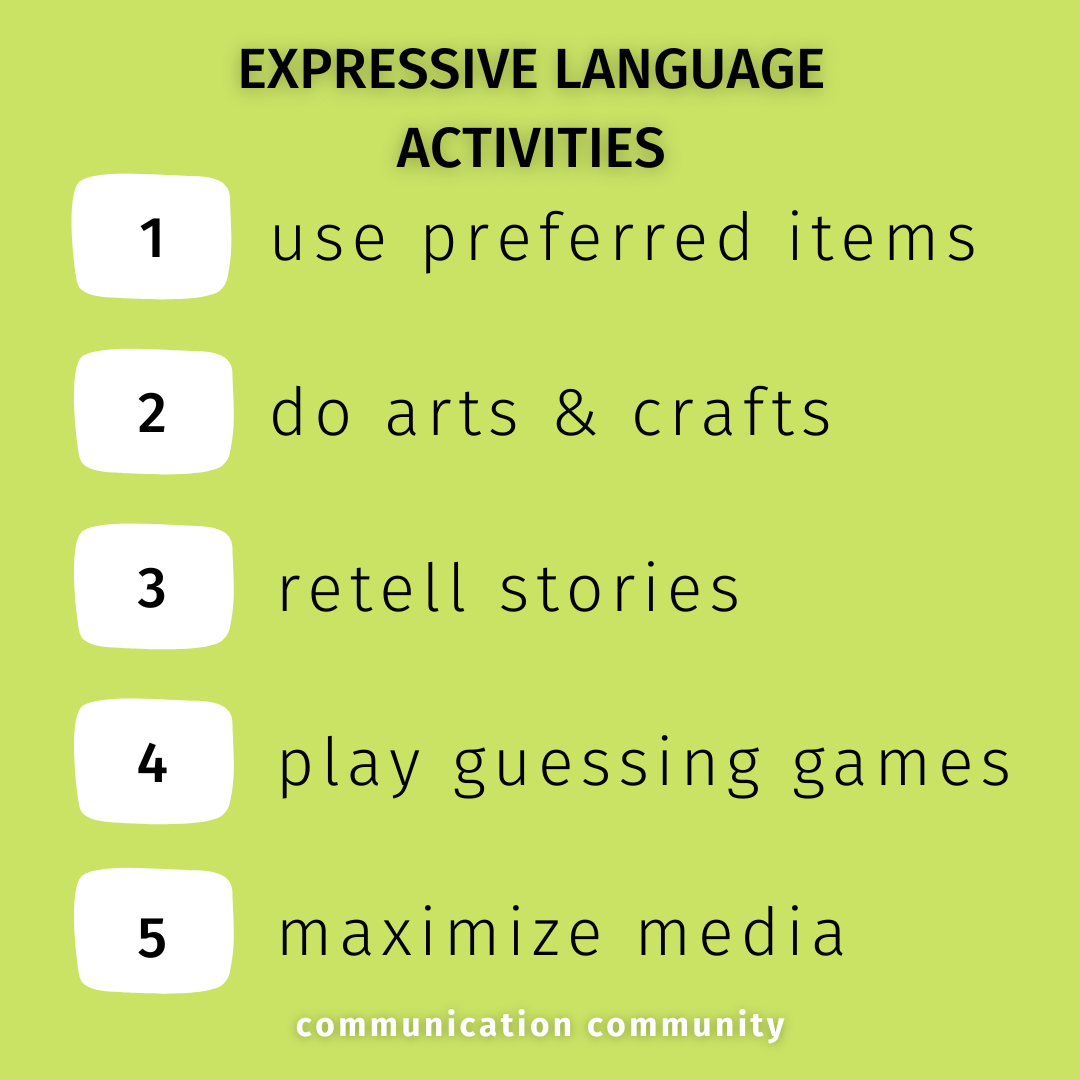

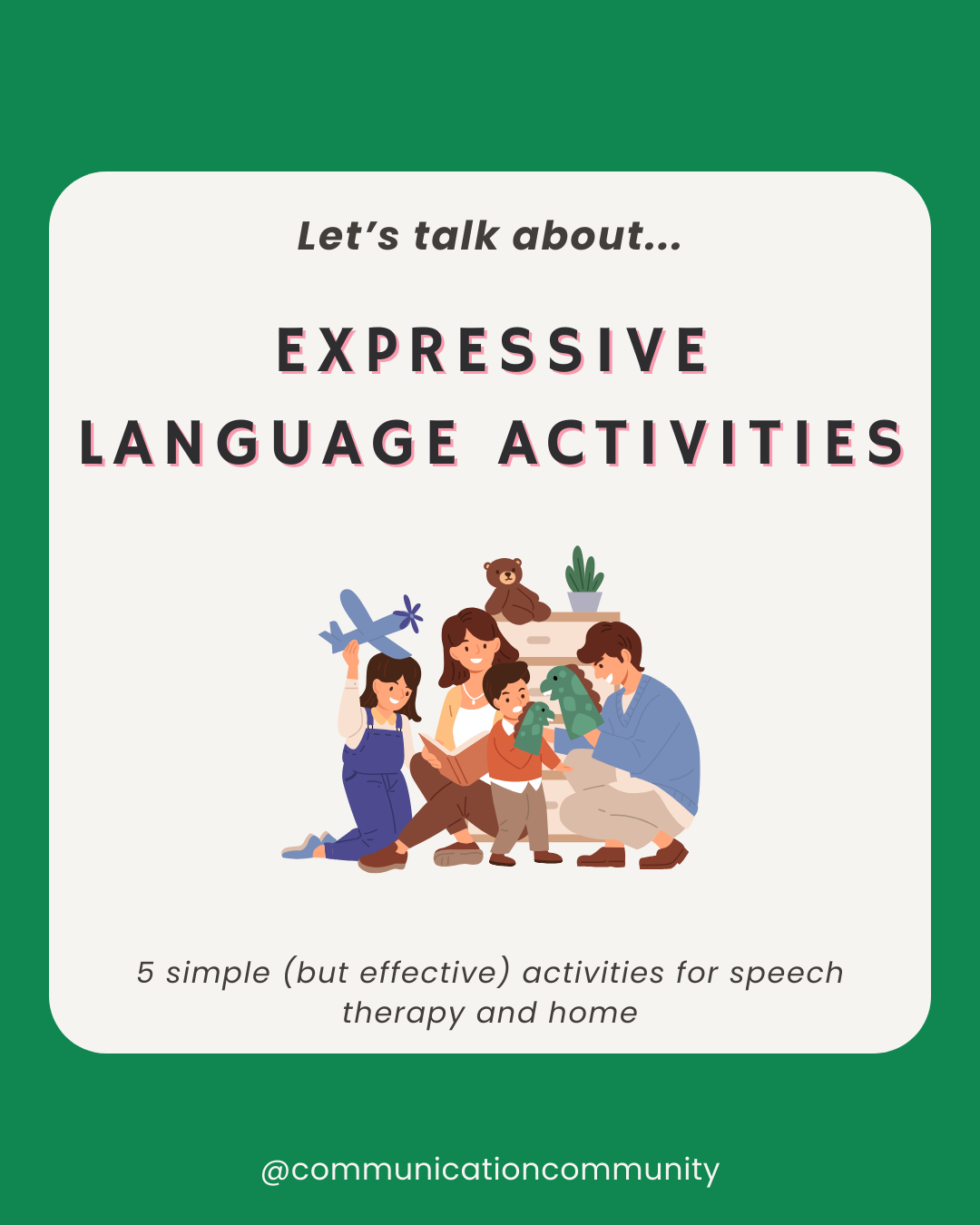
![How to Write Apraxia Goals [with goal bank]](https://www.communicationcommunity.com/content/images/2024/07/Apraxia-Goals--1-.png)
